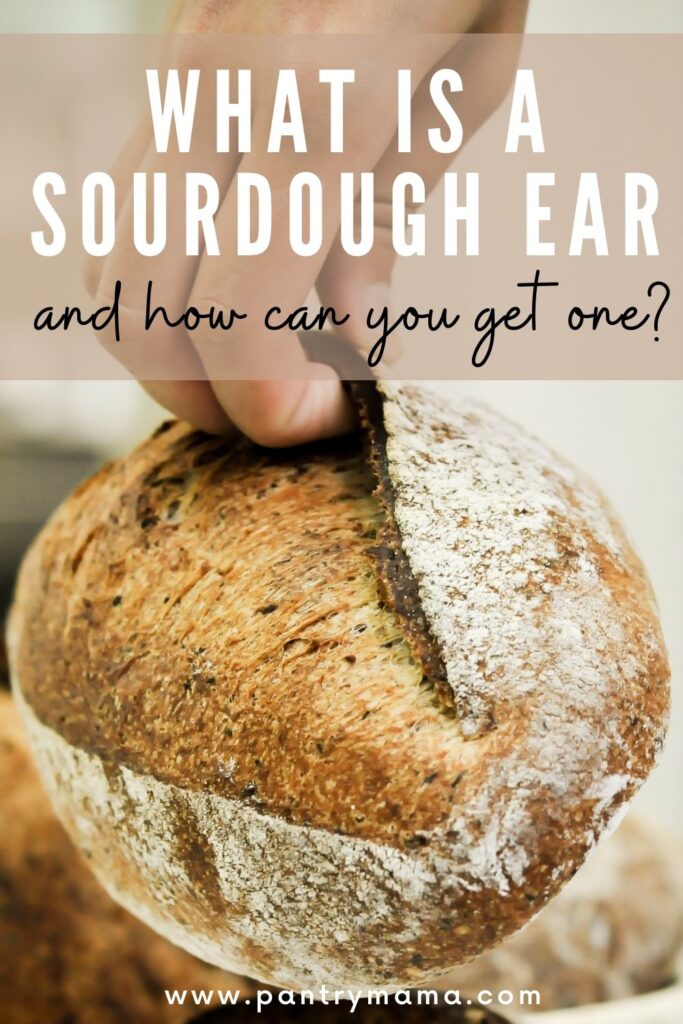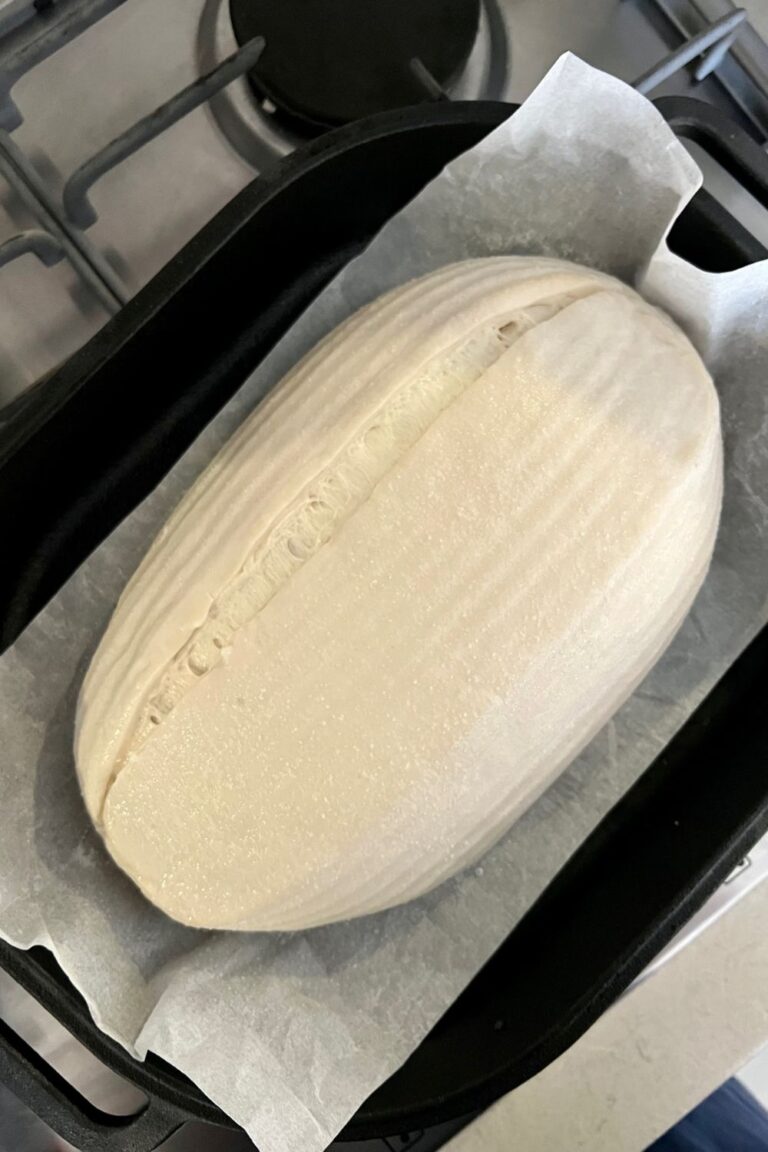The Best Sourdough Ear: A Guide To Nailing Your Sourdough Ear Every Time
This post may contain affiliate links.
The Sourdough Ear. It's like the holy grail of beautiful looking sourdough.
It's not absolutely essential to a great tasting sourdough, however many of the things you do to create a sourdough ear, will also result in better tasting and textured sourdough.
So what is so special about this portion of raised sourdough crust?
What Is A Sourdough Ear?
A sourdough ear is the extra crunchy flap of crust that forms on your sourdough bread while baking.
It's formed by a flap of dough that is pushed upwards and peels back while your dough bakes in a hot Dutch Oven. This portion of raised sourdough crust forms as a result of deliberate scoring allowing expansion in a controlled pattern.

While creating the perfect sourdough ear may look like it's out of reach, with a little bit of know how, it's actually not as hard as you might think.
How Is A Sourdough Ear Formed?
At a basic level, a sourdough ear is created through purposeful scoring of your sourdough before it goes into the oven.
Scoring creates a weak point in the dough, allowing it to give way and crack open when it is placed into the hot oven.
But this will only happen if your sourdough has good oven spring.
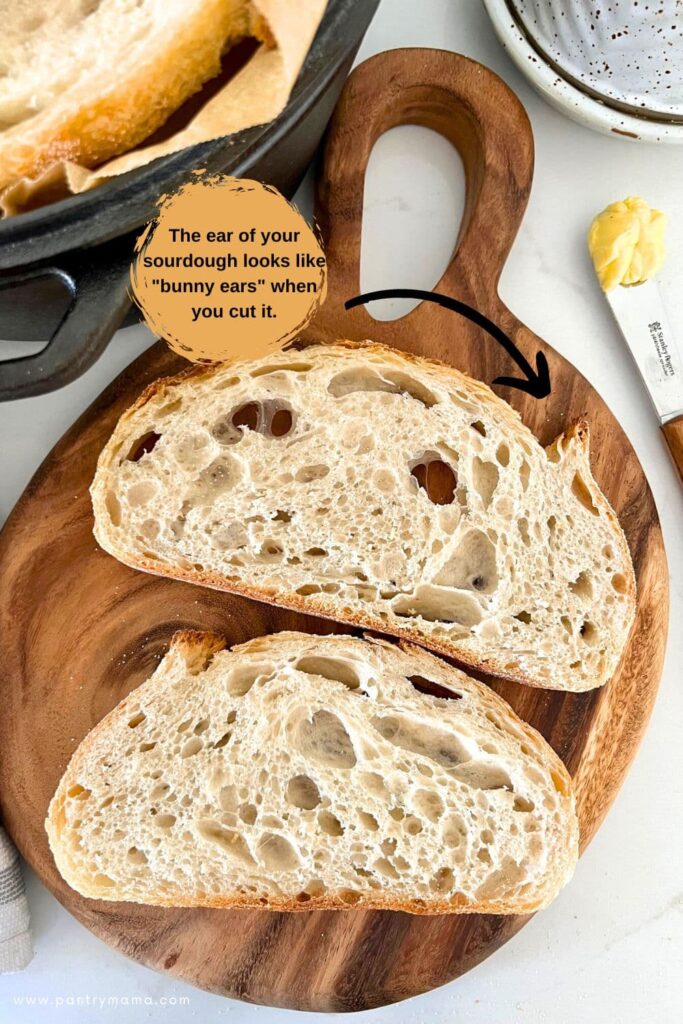
Scoring your bread prompts it to rise in a controlled way - meaning that you can predict the way your sourdough rises, as well as where it forms an ear.
There are certain intentional things you can do to encourage your sourdough to have the best possible ear.
Here are 4 ways to give your bread the best chance of forming the perfect sourdough ear.
- Create good surface tension through intentional shaping
- Precision scoring
- Ensuring good oven spring through good fermentation
- Steaming your dough
Create Surface Tension
Your dough must have adequate tension to be able to form a sourdough ear. This tension needs to be built from the beginning of your process, that is right from the stretch and fold phase (when you develop the gluten network for your sourdough).
The most important part of creating the surface tension happens in the shaping phase.
You need to make sure that you lock in the surface tension on your dough so that it's taught when you go to score it.
It's really hard to score loose dough - the blade will get caught and it gets very messy.
Surface tension will increase with a long cold ferment, as the dough forms a skin and holds all the airy gas bubbles inside, but ultimately you need to have a good shaping technique.
Here are two videos of how to shape both a boule and a batard.
Scoring Correctly to Form A Sourdough Ear
In order to form a sourdough ear, you must score in such a way that you create a flap of dough which is pushed upwards and peels back.
The best way to do this is to use a very sharp razor or lame. A knife will not be sharp enough.
It's even better if you use a curved blade.
You need to score your bread off centre and from end to end. The perfect sourdough ear is created with just one single slash across the entire bread surface.
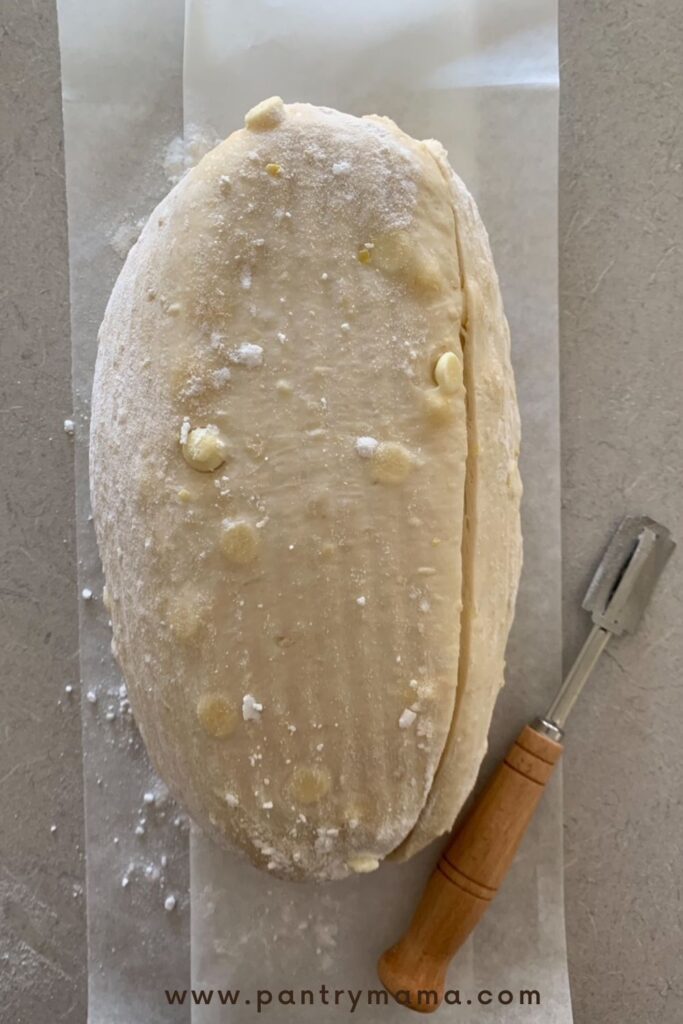
If you don't have a curved blade, you'll need to hold your razor or lame at an angle to create a curved flap.
It needs to be just deep enough, so around ½ inch - not too deep or you will cause other problems.
A steady, swift hand will create the best incision (kind of like a bread surgeon, right?).
You'll find my full guide on how to score sourdough bread here.
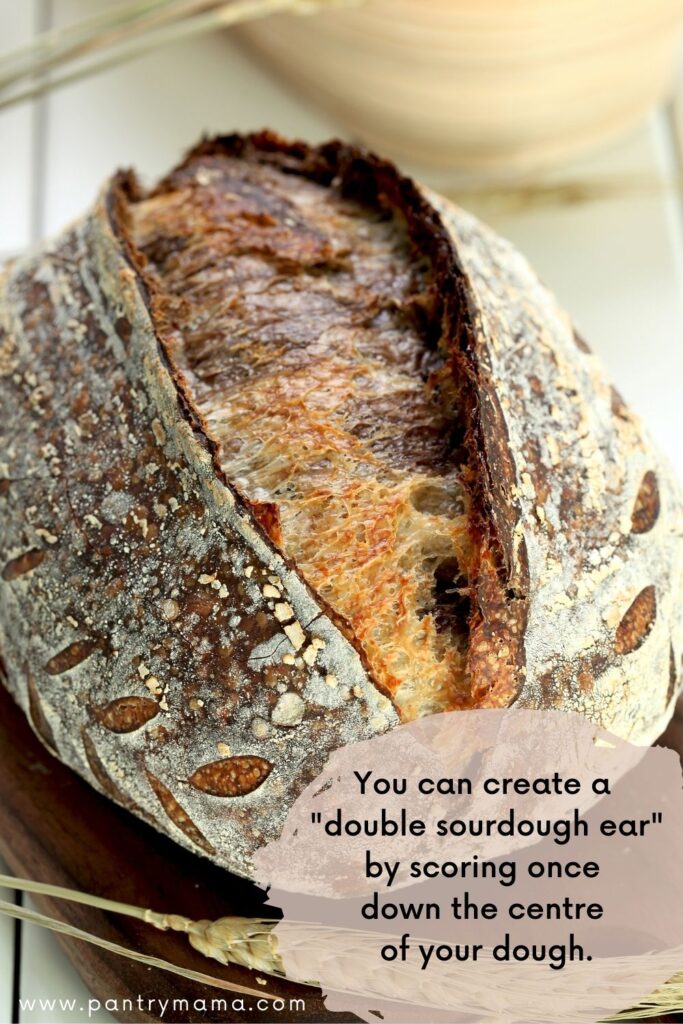
Make Sure Your Dough Still Has Spring
Oven spring is important to creating the perfect sourdough ear. It's the oven spring that pushes upwards and forces the flap of dough that you've scored to be pushed back.
Creating oven spring is a multi faceted approach which I've covered here.
It's super, super important not to over ferment your dough. You want to bake it at just the right time to make sure it really can puff up in the oven.
You might need to bake your dough just before you think it's ready. This will ensure that your dough still has the energy it needs.
You'll find out how to check that your dough has not overproofed by lightly flouring your finger.
Make a small indent in the dough with your finger, if it stays there, the dough has overproofed.
If the indent springs back very quickly, then your dough is under proofed. You can read more about this here.
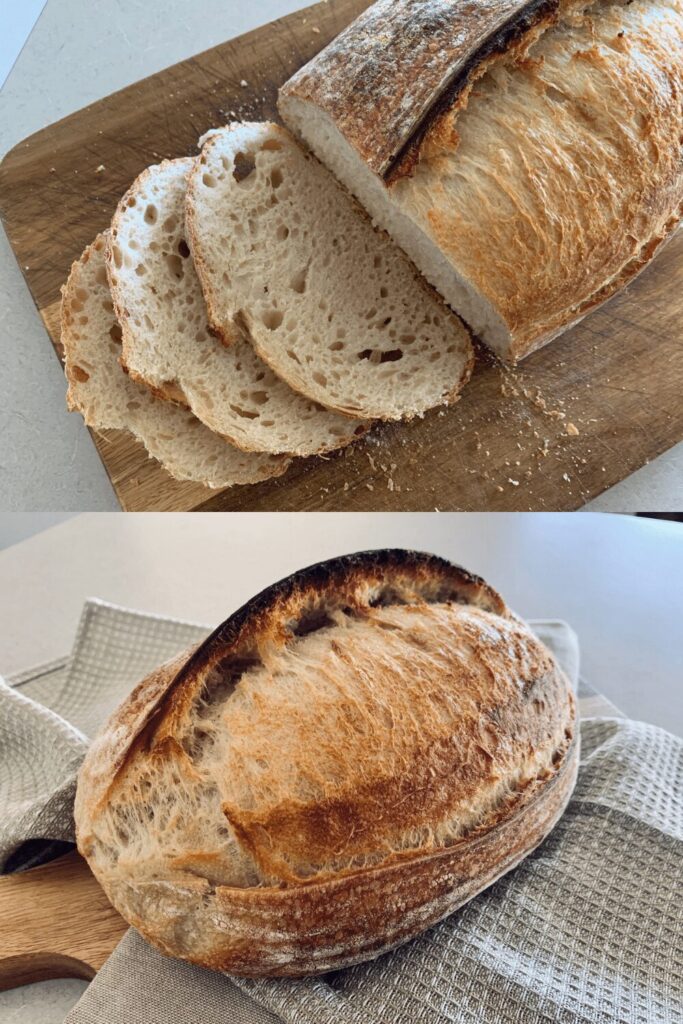
Steam Your Dough
Steam is an important part of creating a good sourdough ear. Using a Dutch Oven to cook your sourdough in will ensure that the moisture from the bread is trapped inside the pot.
You can create even more steam by spraying water into your Dutch Oven, just before you put the lid on.
You could even pop a few ice cubes at the base of your Dutch Oven before placing your sourdough on top.
I find this creates a delicious crackling sourdough crust.
Why Is Steam So Important for A Sourdough Ear?
Steam is important to sourdough because it keeps the dough soft while baking. This ensures it continues to expand freely, giving you maximum oven spring.
If you didn't have steam, the crust would form more quickly. The dough then wouldn't be able to puff up as much.
Steam keeps everything expanding until the very last minute. Then when you take the lid off, you enable that really crunchy crust to form.
Steam will also help you to get a glossier, more caramelised crust. This is because the water in the steam dissolves the sugars in the dough when it touches it.
As the steam evaporates, the sugars are left behind. This is what creates the crunchy, caramelised crust. It helps to make it glossier too!
If you don't have a Dutch Oven, you'll need to check out these tips for baking sourdough without a Dutch Oven.
Frequently Asked Questions
Using a sharp lame or razor is the best way to score your sourdough bread for the best chance of an ear. You can use a knife or scissors, however, they often do not have the precision that a lame or razor does.
Holding the lame at a 45 degree angle and moving in one swift motion is the best way to score for a sourdough ear.
Sourdough ears can be quite divisive - some people love them, others believe it makes the bread harder to slice. Bakers strive for a sourdough ear because it is the culmination of getting many factors "correct" - great oven spring, perfect scoring, the right amount of steam. The ear becomes a sort of sourdough milestone to demonstrate great sourdough baking techniques.
Allowing your dough to cold ferment after shaping can make precision scoring much easier, but it is not essential. It's more important to ensure your sourdough is properly fermented, as this will give you the best oven spring once it hits the hot oven.
Yes it is possible to get two or more ears on your sourdough loaf if you score it that way. Scoring your dough with a giant "S" will give you two crusty sourdough ears. Scoring a batard directly down the centre will also give you two ears if your dough has sufficient oven spring.
Further Reading
- Learn how to fix wet, sticky dough and prevent it from happening again.

